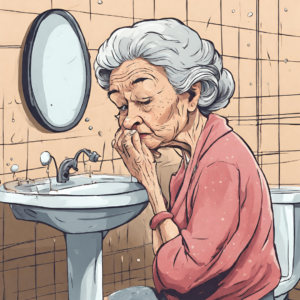
The Psychological Approach to Alleviating Hot Flushes in Menopause
Introduction
Hot flushes, also known as hot flashes, are a common symptom experienced by women during menopause. These sudden feelings of heat can cause discomfort, sweating, and flushing of the face and body. While hot flushes are primarily a physiological response to hormonal changes, psychological factors can play a significant role in their intensity and frequency. In this article, we will explore the psychological approach to alleviating hot flushes in menopause and discuss various strategies that can help women manage this bothersome symptom.
The Mind-Body Connection
The mind-body connection refers to the interplay between our thoughts, emotions, and physical well-being. It is widely recognized that psychological factors, such as stress, anxiety, and negative emotions, can influence the occurrence and intensity of physical symptoms. This holds true for hot flushes as well, where stress and other psychological factors can trigger or exacerbate these uncomfortable episodes. By understanding and addressing the psychological aspects of menopause, women can potentially reduce the frequency and severity of hot flushes.
Managing Stress and Anxiety
Stress and anxiety are known to trigger hot flushes in many women. Learning effective stress management techniques can be beneficial in reducing the frequency and intensity of these episodes. Here are some strategies that can help:
1. Mindfulness meditation
Practicing mindfulness meditation can help women cultivate awareness of their thoughts and emotions, enabling them to respond to stressors with greater calmness and resilience.
2. Deep breathing exercises
Taking slow, deep breaths can activate the body’s relaxation response, reducing stress and promoting a sense of well-being.
3. Physical exercise
Engaging in regular physical activity has been shown to alleviate stress and anxiety, potentially reducing the occurrence of hot flushes.
4. Cognitive-behavioral therapy (CBT)
CBT is a form of therapy that aims to identify and change negative thought patterns and behaviors. It can be particularly helpful in managing anxiety and stress associated with menopause.
Emotional Well-being
Emotional well-being plays a crucial role in managing hot flushes. By improving overall emotional health, women can experience a reduction in the frequency and severity of these episodes. Here are some strategies to enhance emotional well-being:
1. Seeking support
Connecting with friends, family, or support groups can provide a safe space to share experiences and emotions related to menopause. It can also help alleviate feelings of isolation and provide a sense of validation.
2. Journaling
Writing down thoughts, feelings, and concerns in a journal can serve as an outlet for emotional expression and reflection. It can help women gain clarity and perspective, reducing emotional distress.
3. Relaxation techniques
Engaging in activities like yoga, tai chi, or progressive muscle relaxation can promote emotional well-being and reduce the occurrence of hot flushes.
4. Expressing emotions
Encouraging the healthy expression of emotions can prevent their suppression, which may contribute to increased stress and hot flushes. Finding creative outlets, such as art or music, can be beneficial in this regard.
Positive Lifestyle Changes
Adopting a healthy lifestyle can have a positive impact on menopausal symptoms, including hot flushes. Here are some lifestyle changes that can help alleviate hot flushes:
1. Healthy diet
Consuming a balanced diet that includes fruits, vegetables, whole grains, and lean proteins can support overall health during menopause. Some women find that avoiding triggers, such as spicy foods, caffeine, and alcohol, can help reduce the frequency of hot flushes.
2. Regular sleep patterns
Establishing a consistent sleep routine and creating a conducive sleep environment can promote restful sleep. Sufficient sleep is essential for emotional well-being and can help manage hot flushes.
3. Limiting stressors
Identifying and minimizing sources of stress in one’s life can help reduce the occurrence of hot flushes. This may involve setting boundaries, delegating tasks, or practicing time management.
4. Hormone replacement therapy (HRT)
For women experiencing severe or persistent hot flushes, hormone replacement therapy may be an option. HRT can alleviate symptoms by supplementing estrogen levels in the body. However, it is essential to consult with a healthcare professional to determine the suitability and potential risks associated with HRT.
Conclusion
While hot flushes are primarily a physiological symptom of menopause, addressing the psychological aspects can be instrumental in alleviating their intensity and frequency. By managing stress, enhancing emotional well-being, and adopting positive lifestyle changes, women can experience a reduction in hot flushes and improve their overall quality of life during this transitional phase. It is important to remember that every woman’s experience with menopause is unique, and what works for one may not work for another. Consulting with healthcare professionals and exploring various strategies can help women find an individualized approach to managing hot flushes and embracing this new chapter of life with grace and ease.
Surprising High-Protein Breakfast Foods Recommended by Dietitians for Effective Weight Loss
Fresh Faces: Will Michael Beale shake up the lineup for today’s New Year’s clash?

